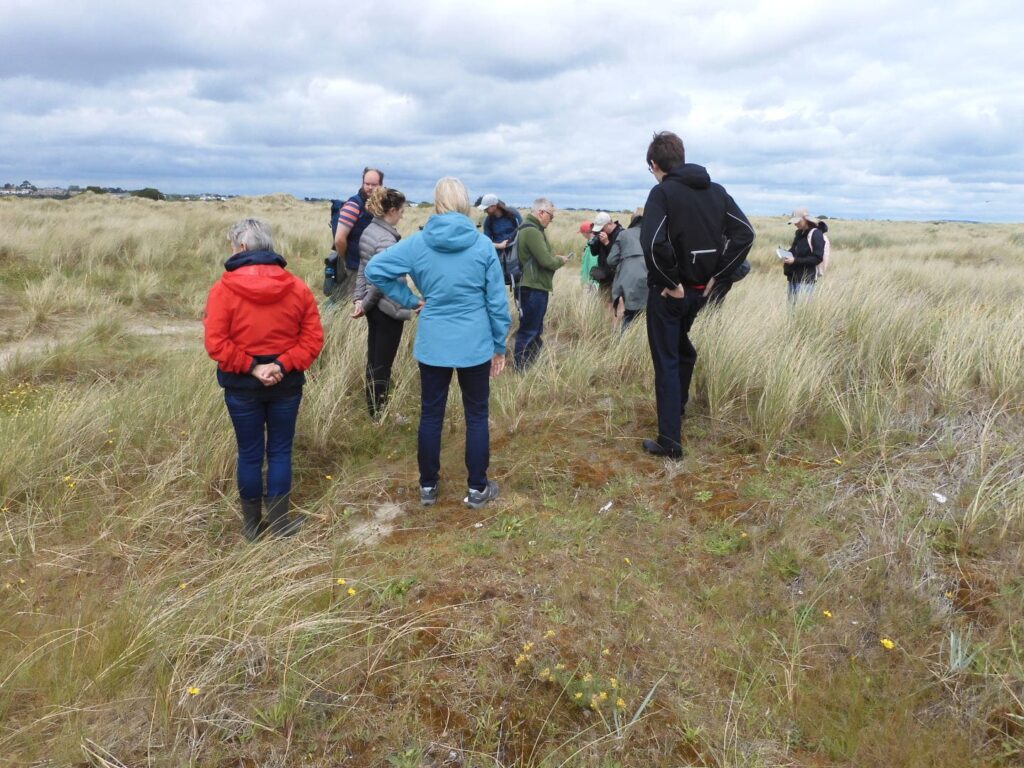
My thoughts on yesterday’s Orchid Safari to Bull Island.
Firstly the place: the more I visit Bull Island the more I discover a new ecological niche. The whole island is so rich in habitats from the various state of the sand dunes (deep thick marram grass to low cropped flower meadows to storm or human-cleared open sand holes); the dune slacks and bogs; permanently wet salt marsh rich in flowers and birds and plants I’ve not ever seen before. And many more little areas like under the numerous small alder coppice that scatter the slacks and back dunes.
It is without doubt an incredibly rich environment.
One thing I’ve learnt this year is that these expeditions are best as a movable feast due to the vagaries of climate.
Last year we visited on a cool and blustery June evening (27th) after a mild wet winter and a hot sunny spring. The Bee Orchids (Ophrys apifera) were nearly over, only a few of the top most flowers were open still.
This year I had intended to go earlier in May (24th), but a pre-expedition showed that, although the spring was bright, dry and sunny, the cold wind off the Irish Sea had suppressed the orchid growth. I could only find a few small, early rosettes.
On our IOS trip to SE England last year (12th May) Deborah Lambkin took us to a disused quarry site covered in Common Twayblade (Neottia ovata) in full flower. This was the one species we couldn’t locate last year on Bull Island, so it was number one on my list this year.
I thought my May visit would reveal some; sadly not a dot!
Yesterday’s visit showed that many orchids are still a little behind last year. However, this weeks’ warm weather will no doubt spur them along and particularly the dune slacks will be covered in Marsh Helleborine (Epipactis palustris) in full flower by the weekend.
What we did see this year were some truly stunning examples of Dactylorhiza sp. with remarkable leaf patterns. Unfortunately I’m just not experienced enough yet to ID with any certainty species or hybrids of Dactylorhiza. The identifications below are my current best efforts. These trips are a learning experience for me too!
One of the escalator-regrets I have is that I never take enough photos or photos of places that I should have captured!
The number one aim of this year’s expedition was attained! At the second area visited we found Neottia ovata in good numbers.
In fact the northern part of the island, in my humble opinion, was a far richer and denser in orchids than the southern part.
It required a good trek to reach it; but it was very well worth it!
In that one area all the recorded genus were found. Now the species: let’s see if we can ID from the photos?
Definitely identifiable were:
Ophrys apifera (Bee Orchid)
Anacamptis pyrimidalis (pyramid orchid)
Dactylorhiza fuchii subsp. fuchsii (Common Spotted Orchid)
Dactylorhiza incarnata subsp. coccinea (Early Marsh Orchid)
Dactylorhiza purpurella (Northern Marsh Orchid)
Epipactis palustris (Marsh Helleborine)
Neottia ovata (Common Twayblade)
Not so sure:
Dactylorhiza kerryensis (Western Marsh Orchid)

So sorry to have missed this day out. I definitely need to clear my calendar for next years trip to Bull Island.